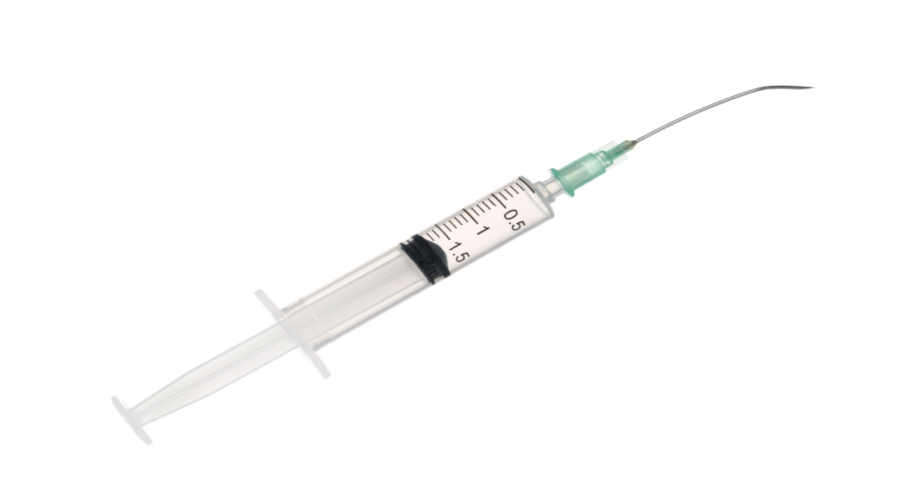Inside: Are you spending too much to run your pharmacy? Learn how to reduce your expenses and increase your profit.
Every dollar spent on your expenses is one less dollar in your pocket.
Do you know how much you should be spending to run your pharmacy? How much profit are you missing out on? How are other pharmacies faring?
Find how much you should be spending on all facets of your business—and learn how to keep those costs down.
Inventory
Stocking your pharmacy is far and away the largest cost of running your business. You can expect inventory to eat up about 68 percent of your total expenses.
The 2018 NCPA Digest found that the average cost of goods for an independent pharmacy is a whopping $230,690 every month.
The Digest also found that the average cost of dispensing was $10.79 per prescription.
When you carefully measure your inventory, you’ll know exactly what to buy so prescriptions don’t end up expiring on the shelves.
The most effective way to reduce inventory costs is getting a better deal from your primary wholesaler. By joining a group purchasing organization like ProfitGuard®, your pharmacy gains purchasing power and negotiation expertise to get better rates from wholesalers. ProfitGuard also provides proprietary purchasing tools that maximize wholesaler rebates and item-by-item savings automatically. ProfitGuard members have averaged between $70,800 and $212,400 in annual savings on their cost of goods.
Getting the most out of your primary wholesaler contract is the best way to manage your cost of goods, but there are times when your primary wholesaler might not have the best price or might be out of the NDC you need. When these situations inevitably arise, you need to have a reliable secondary supplier to help keep your cost of goods manageable.
BuyLine®, an NABP-accredited secondary supplier, offers a full line of brands, generics, OTCs, and controls at the lowest prices in the secondary market. In addition to having low list prices, BuyLine also rewards purchases with cash rebates and significant discounts on brands. Earn up to an additional 10% cash rebate on generics and up to WAC -4% on brand.
With online ordering and next-day shipping options, shopping with BuyLine is quick and convenient. There are absolutely no commitments with BuyLine — no fees, no contracts.

Read next: How to Maximize Rebates and Profitability on Pharmacy Inventory
Rent
Another inevitable expense is the rent for your space. Commercial real estate prices vary wildly from state to state, but a good rule of thumb is to spend between 5 and 10 percent of your annual revenue.
You can also think about price per square foot instead of total monthly cost to figure out if your rent is what it should be. If your neighbors are all paying $15 per square foot while you’re paying $20, you might want to consider moving to a more cost-friendly space.
Rent must be considered in light of other factors, however. Areas with high traffic or spots granting exposure to your targeted demographic justify greater expense, as they’ll produce greater revenue.
Understanding the terms of your lease is another important step that could save you money in the long run. When you initially sign, you might think you’re getting a good deal. But when you hit the one-year mark, an escalation could kick in and raise the price significantly.
Items to look out for in your lease agreement include:
- Who pays for repairs and improvements
- Whether or not you are allowed to expand
- Length of lease
- Renewal options
- Conditions on your security deposit
- Restrictions on signage
- How disputes will be settled
If they are unfavorable to the leaseholder, these stipulations can add up quickly, making what looks like a great deal much pricier.
Wages and benefits
You might find less flexibility with the wages for your employees. The NCPA Digest found that the average hourly wage for a technician is $15.05 and $11.05 for a clerk. A pharmacist can expect $58.10 an hour.
While expected wages vary from state to state, paying below market rate can result in high turnover, which is ultimately more costly for your business. It will also attract less qualified talent.
Another cost associated with your employees is health insurance. For group health insurance, employers are expected to cover 50 percent of the premium cost. There might be some sticker shock associated with this benefit—in 2017, the average employer premium was $6,486 per worker for small businesses—but the result is healthier and more productive employees. And a more attractive workplace.
If you purchase your plan through the Affordable Care Act exchange, you become eligible for additional tax credits, reducing the cost of providing health insurance.
Insurance
In order to protect everything you’ve built, insurance is a must.
There are at least three types of insurance to consider.
1. Professional liability insurance
This insurance protects you when you make a mistake—usually by dispensing the wrong drug or the wrong dose. According to Insureon, professional liability insurance for a small business costs an average of $1,735 a year, although there’s a chance it could be more expensive for a higher-risk industry like pharmacy.
2. Workers compensation insurance
All states except for Texas require businesses to carry workers compensation insurance, which ensures that employees who sustain an injury on the job can get the care they need. The cost of workers compensation coverage is determined by the number of employees and varies from state to state, but it ranges from $.75 to $2.75 for every $100 in payroll.
3. Property insurance
Whether you rent or own your premises, property insurance is necessary. It protects your business and inventory in the case of a disaster or accident. Commercial property insurance can be as little as $500 for a small business.
If you skimp on your policies, you may find that you don’t have the right coverage when you really need it, but there are other ways to save money on insurance for your business.
Get multiple quotes to make sure you’re getting the best rate. You also might choose a higher-deductible plan in order to have a lower monthly payment. There’s a possibility you could also get a discount by bundling multiple plans from the same provider.
Operations
Keeping the lights on (and other utilities like gas, water, internet, and the phone bill) should cost around $2 per square foot.
You can save on utilities for your pharmacy the same ways you save at home—by using energy saving modes in electronics, being conscientious about turning the lights on and off, and keeping your thermostat at a reasonable temperature.
RELATED: How to Slash Pharmacy Overhead Costs Right Now
Website and other marketing
In addition to the expenses you need to keep your business operational, you also need to spend money to get your name out in the community.
A DIY website can run as low as $8 a month, and paying for a domain costs between $10 to $12 a year. You might decide to pay a little extra for an SSL certificate, which makes your website more secure at around $10 a month.
The average marketing budget for a small business is around 11 percent of overall revenue, but you can cut down on that by strategically increasing your social media presence, which serves as a free marketing opportunity.
Taxes
Taxes are one of the only certainties in life—including those on your pharmacy. Most small businesses are “pass-through” entities, which means the tax rate is tied to the income of you, the business owner. If your pharmacy is classified as a corporation, it will be taxed under the corporate tax rate, which is 21 percent at the highest.
Other taxes to account for are payroll taxes—which come out to 7.65 percent of your gross payroll—as well as unemployment taxes, workers compensation taxes, property taxes, and dividends.
And those are just federal taxes. States have their own business taxes, some of which are more favorable than others.
In order to avoid paying more than you have to, know what deductions you’re eligible for. You might be able to use the new Qualified Business Income Deduction, which takes 20 percent off your pharmacy’s taxable income.
Under the Tax Cuts and Jobs Act, you can use a single adjustment to tax reporting, called a 481(a) adjustment. This adjustment applies if you change your accounting for tax purposes from accrual to cash basis and file an IRS Form 3115. In the past, most pharmacies have been required to report under the accrual basis of accounting, which means they report revenues and expenses when they’re earned, even if they have not received or paid cash yet. But under the new law, pharmacies with revenues under $25 million can switch to accounting on a cash basis, meaning they would only report revenues and expenses when the cash is received and paid.
Ollin Sykes, CPA, president of Sykes & Company, P.A., an accounting firm that specializes in independent pharmacy taxes, said, “In most cases it wipes out a substantially large part, if not all, of the income for the 2018 tax year for most pharmacies. I can tell you, looking at hundreds of pharmacies’ accounting books and records over the last year, we will be making those adjustments in most cases.” But he emphasized that pharmacies should check with their CPA because the move won’t make sense for every pharmacy business.
A Member-Owned Company Serving Independent Pharmacies
PBA Health is dedicated to helping independent pharmacies reach their full potential on the buy-side of their business. Founded and run by pharmacists, PBA Health serves independent pharmacies with group purchasing services, wholesaler contract negotiations, proprietary purchasing tools, and more.
An HDA member, PBA Health operates its own NABP-accredited warehouse with more than 6,000 SKUs, including brands, generics, narcotics CII-CV, cold-storage products, and over-the-counter (OTC) products — offering the lowest prices in the secondary market.












